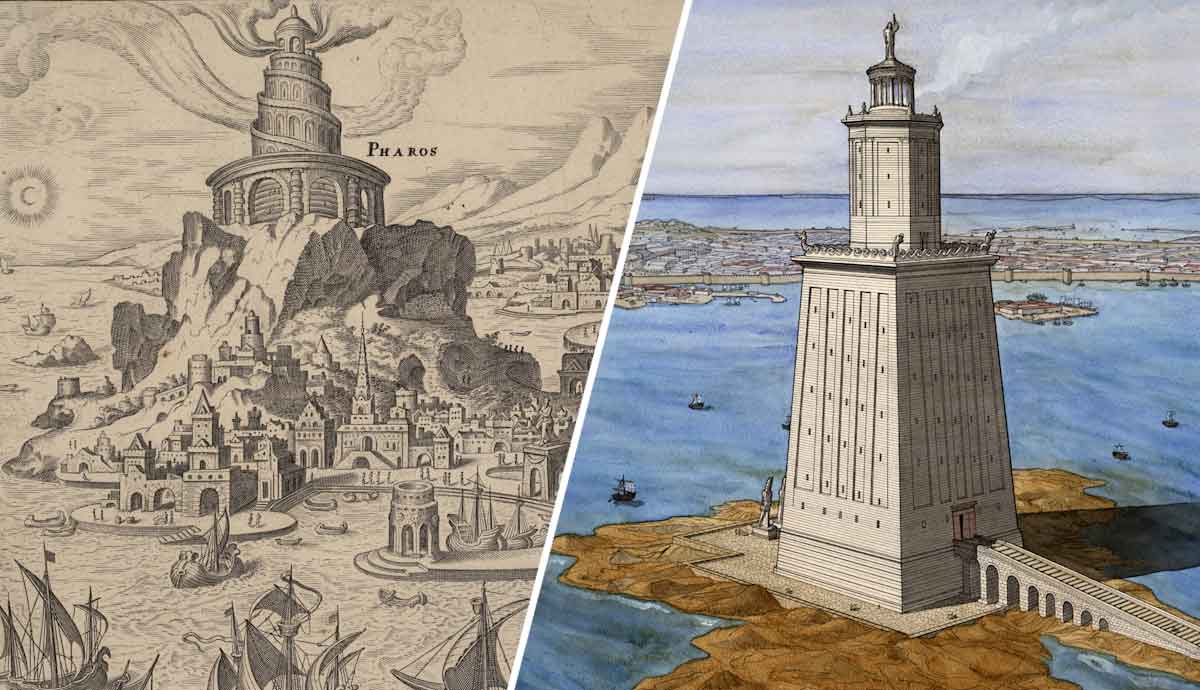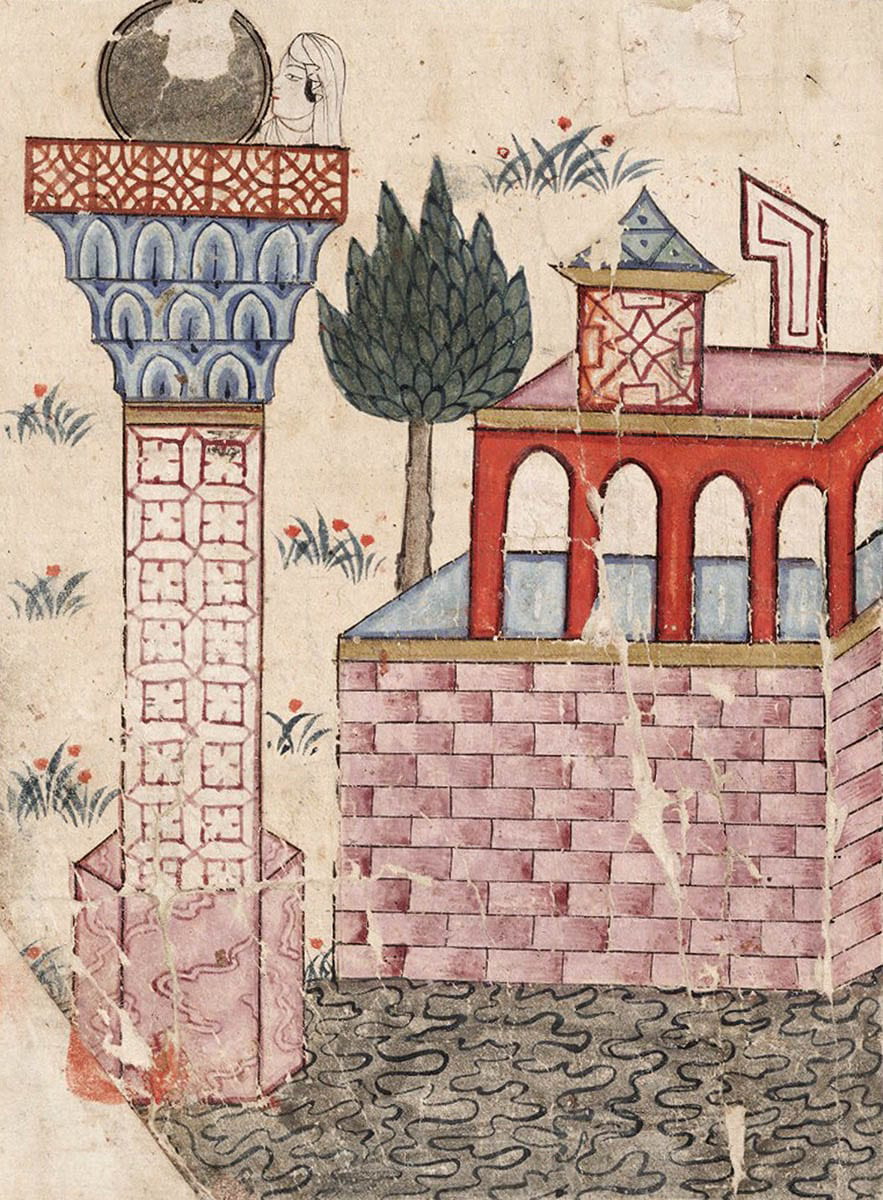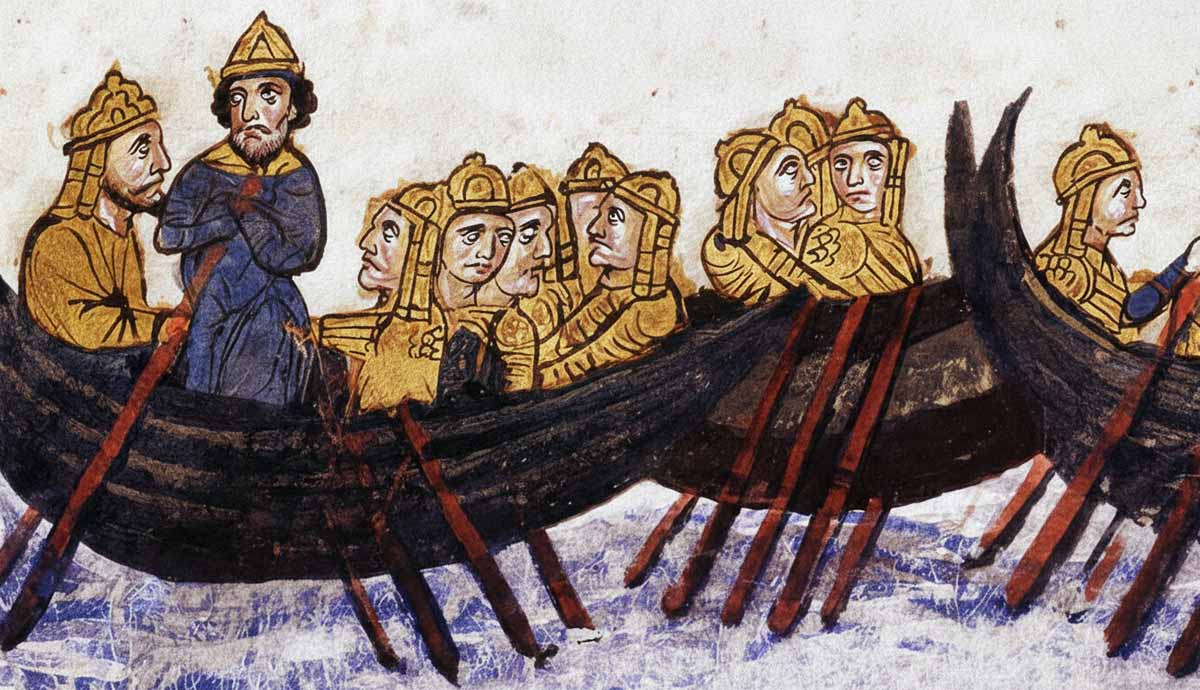
Rocky coastlines and reefs are among the biggest dangers for sailors as they approach the shore. Lighthouses have helped sailors safely navigate harbors since ancient times. Initially, they were fires placed on hilltops and then on raised platforms. But the first true lighthouse was built in the Egyptian city of Alexandria, on an island called “Pharos,” which became the word for lighthouse in many languages. Standing over 110 meters (360 feet) tall, the Lighthouse of Alexandria became one of the Seven Wonders of the Ancient World.
Quick Facts
| Built | Completed c. 280 BCE |
| Creators | Probably Sostratus of Cnidus under the orders of Ptolemy I Soter |
| Location | Isthmus of Pharos, Alexandria, Egypt |
| Overview | First known lighthouse, around 110 meters tall |
| Destruction | Earthquakes between 956 and 1323 CE |
Who Built the Lighthouse of Alexandria?
Alexandria was among the most important port cities in Egypt and the Mediterranean during antiquity. The area was used as a port centuries before the founding of the city by Alexander the Great in 332 BCE. Its importance grew once Alexander turned it into a marine base for his fleet.
When Alexander’s Macedonian general Ptolemy I Soter claimed Egypt following Alexander’s death and founded the Hellenistic Ptolemaic dynasty, he built up Alexandria as his new capital. He ordered the construction of a gigantic lighthouse to guide ships.
Standing over 110 meters (360 feet) tall, the lighthouse was built on the nearby island of Pharos, which was later connected to the shore by a mole. Although the origins of the name “Pharos” are unknown, it soon became a synonym for “lighthouse” in Greek. Therefore, “Pharos of Alexandria” may refer either to the small island near Alexandria or to the lighthouse that was built there.

“Pharos is a small oblong island, and lies quite close to the continent, forming towards it a harbour with a double entrance. For the coast abounds with bays, and has two promontories projecting into the sea. The island is situated between these, and shuts in the bay, lying lengthways in front of it. Of the extremities of the Pharos, the eastern is nearest to the continent and to the promontory in that direction, called Lochias, which is the cause of the entrance to the port being narrow. Besides the narrowness of the passage, there are rocks, some under water, others rising above it, which at all times increase the violence of the waves rolling in upon them from the open sea. This extremity itself of the island is a rock, washed by the sea on all sides, with a tower upon it of the same name as the island, admirably constructed of white marble, with several stories.”
(Strabo, Geography, Book XVII, Chapter I)
How Was the Lighthouse Constructed?

The construction of the Lighthouse of Alexandria was a remarkable feat of engineering. The tower stood over 110 meters (360 feet) tall, with the pyramids of Giza, another wonder of the ancient world, being the only taller structures at that time. It is believed to have been designed by the Greek architect and engineer Sostratus of Cnidus, although his role as an architect has been disputed. Sostratus had reportedly been observing the movements of the stars and the patterns of the waves for years to determine the best location for the tower.
“Sostratus of Cnidus, a friend of the kings, erected it for the safety of mariners, as the inscription imports.16 For as the coast on each side is low and without harbours, with reefs and shallows, an elevated and conspicuous mark was required to enable navigators coming in from the open sea to direct their course exactly to the entrance of the harbour.”
(Strabo, Geography, Book XVII, Chapter I)
OTHER WONDERS OF THE ANCIENT WORLD
- Pyramids at Giza
- Statue of Zeus Olympia
- Hanging Gardens of Babylon
- Colossus of Rhodes
- Temple of Artemis at Ephesus
- Mausoleum of Halicarnassus

Once the construction was completed around 280 BCE, Sostratus reportedly inscribed his name on the walls and then added an extra layer of plaster with Ptolemy’s name written on top. According to the satirist Lucian of Samosata, he did this knowing that the external layers would eventually fall, revealing his name as the creator of the architectural masterpiece in the years to come.
“After he had built the work he wrote his name on the masonry inside, covered it with gypsum, and having hidden it inscribed the name of the reigning king. He knew, as actually happened, that in a very short time the letters would fall away with the plaster and there would be revealed: ‘Sostratus of Cnidos, the son of Dexiphanes, to the Divine Saviours, for the sake of them that sail at sea.’ Thus, not even he had regard for the immediate moment or his own brief life-time: he looked to our day and eternity, as long as the tower shall stand and his skill abide. History then should be written in that spirit, with truthfulness and an eye to future expectations rather than with adulation and a view to the pleasure of present praise.”
(Lucian, How to Write History, LXII)
Why Was the Lighthouse of Alexandria So Famous?

The Pharos of Alexandria was indeed a complex structure that was built on solid blocks of limestone, sandstone, and granite. One of the oldest accounts comes from the writings of Philo of Byzantium and Antipater of Sidon from the 3rd and 2nd centuries BCE, respectively. Most importantly, the addition of Pharos to the list of the “Seven Wonders of the Ancient World” is often attributed to these two writers.
According to the archaeologist Hermann Thiersch’s “Pharos antike, Islam und Occident,” the base was square and sturdy, made to withstand the waves crashing into it. The middle part was octagonal, and the top was cylindrical. Each level was sloping slightly inward, and a spiral ramp was built to enable people to reach the top, where the fire would burn to emit light during the night. According to some descriptions, bronze mirrors were placed on the apex that reflected the sunlight to help sailors enter and exit the port during the day. It is believed that its light could be seen over 40 kilometers (24.85 miles) away.

Roman coins also depict some decorative items placed on top of the tower, including a huge statue of Alexander the Great or, according to some sources, of Poseidon, Zeus, or Ptolemy I, depicted as the god Helios. It is now suggested that the great statue was believed to depict different gods or mortals at different times in history. Four smaller statues, probably of the son of Poseidon, Triton, were placed at the four corners of the building. After the Muslim conquest of Egypt, the decorative items and beacons were replaced by a small mosque.
The historical lighthouse took twelve years to complete, and it cost more than 800 talents of silver, which, by today’s standards, would be worth around US$21 million. It became an important landmark of the Hellenistic period, and travelers from all over the world were encouraged to visit Alexandria to admire the tower.
How Was the Lighthouse of Alexandria Destroyed?

Constructed in a seismogenic zone, the Pharos of Alexandria suffered repeated damage from earthquakes until its structural collapse in 956 CE and 1303 CE, and its complete destruction after an earthquake in 1323 CE.
The Pharos of Alexandria was in ruins by 1477 CE when Mamlūk sultan Qāʾit Bāy ordered the creation of a fort on the spot where it once stood. After many centuries, in 1968, a UNESCO-sponsored expedition led to the rediscovery of some of the ruins, but due to the lack of expertise in underwater archaeology, the exploration was put on hold.
In 1994, archaeologist Jean-Yves Empereur was able to continue the search and discovered Hellenistic statues and multiple stone blocks in the underwater area around Pharos. The blocks are believed to have been some of the masonry blocks used to construct the lighthouse, which eventually fell into the sea in 1323 CE. This discovery led to the Egyptian government’s decision to cancel the plans to build a breakwater in the area and replace it with the idea of creating an underwater museum park for divers.
The Lighthouse of Alexandria: Stories & Legends

The seventh wonder of the ancient world has inspired many legends and stories. One recent belief, not supported by evidence, is that the tower was used as a weapon to defend the city. According to this theory, Pharos could light enemy ships on fire, either with prismatic lenses or by spraying fire from the top of the tower.
The 10th-century writer al-Mas’udi connected the destruction of the lighthouse to a Byzantine eunuch agent who gained the trust of the Caliph and permission to enter the tower. According to this story, the eunuch wanted to search for a hidden treasure that was believed to have been buried in the foundations of the tower. The man cunningly destroyed the foundations little by little every night, which eventually caused the building to collapse.

The Pharos of Alexandria continues to hold great significance in a historical and cultural context, inspiring architects and artists across time and space. For example, the design of minarets in many Egyptian Islamic mosques originally followed a three-stage design similar to the one of Pharos. In Abusir of Egypt and other parts of the world, similar constructions were built that were named “Pharos” but lacked the height and decorative elements of the original lighthouse.
The lost tower now stands as a symbol of the grandeur of Hellenistic years and of the cultural significance of Alexandria as a cosmopolitan hub for philosophers and scholars.









